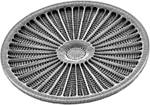Post Cure: Bionic fiber placement produces load-optimized, nature-inspired thermoplastic composite preforms
Fibionic’s fibionic fiber placement (FPP) technology enables the development of “fiber skeletons,” semi-finished parts suitable for any application that incorporates composite reinforcement exactly where it is needed.
Source | Fibionics
Through the development and implementation of fibionic fiber placement (FFP), (Götzens, Austria) is able to achieve bionic-optimized semi-finished products called “fiber skeletons.” Suitable for any application, they boost performance, advance fiber placement and achieve zero waste at high volumes using a variety of reinforcement and matrix options.
Mimicking nature, FFP uses composite reinforcement exactly where it is needed, enabling 30-60% weight savings in parts and 20-40% material savings. Fibionic’s preform process begins with CAD and digital optimization, followed by fiber alignment using its patented air stream FFP technology. 2D stacks are then consolidated and transformed into 3D preforms in a final thermoforming step, ready for subsequent integration into high-performance parts like the Saddle Skeleton shown here.
The fiber skeleton (left) is the load-bearing structure of a bike saddle (right). It comprises carbon fiber-reinforced PA12 with ~52% fiber content by volume, which is then integrated with injection molded short carbon-reinforced PA12 to enable a fully recyclable thermoplastic composite saddle at a production output of one part per minute. Using the FFP process optimized the structure’s fiber angles and material distribution, achieving a product that can save 25% weight compared to a pure injection molded counterpart, or match the properties of saddles made with carbon fiber prepreg.
Related Content
-
“Structured air” TPS safeguards composite structures
Powered by an 85% air/15% pure polyimide aerogel, Blueshift’s novel material system protects structures during transient thermal events from -200°C to beyond 2400°C for rockets, battery boxes and more.
-
Plant tour: Collins Aerospace, Riverside, Calif., U.S. and Almere, Netherlands
Composite Tier 1’s long history, acquisition of stamped parts pioneer Dutch Thermoplastic Components, advances roadmap for growth in thermoplastic composite parts.
-
Combining multifunctional thermoplastic composites, additive manufacturing for next-gen airframe structures
The DOMMINIO project combines AFP with 3D printed gyroid cores, embedded SHM sensors and smart materials for induction-driven disassembly of parts at end of life.



